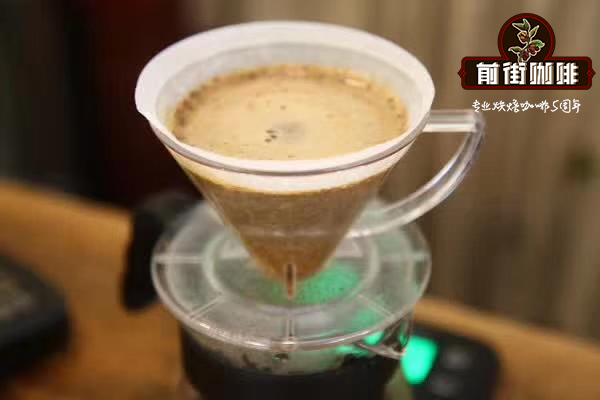coffee roasting| How many ways to roast coffee?

Professional coffee knowledge exchange More coffee bean information Please pay attention to coffee workshop (Weixin Official Accounts cafe_style)
Meaning of baking
1
Definition of baking
The so-called coffee roasting refers to the process of converting raw beans into dark brown raw beans by heating the raw beans to cause a series of physical and chemical reactions inside and outside the coffee beans, and in the process to produce various flavors such as acid, bitterness, and sweetness of coffee, forming alcohol and color.
2
Importance of baking
Among the factors that affect the taste of a cup of coffee, green beans account for 60%, roasting accounts for 30%, and extraction accounts for 10%. Good roasting can bring the personality of green beans to the extreme and minimize the appearance of defective flavors. Conversely, improper roasting will completely destroy good beans. The importance of baking is all the more important because the heat, time, and temperature control during baking are difficult to grasp and baking technology is a complex technology.
As early as the 13th century, Arabs invented coffee beans in a pot, heated and fried, then ground into powder, and then brewed coffee. The early Arabs liked to bake beans lightly, boil them and drink them with spices such as cardamom.
This method of roasting coffee was later spread to Syria, Turkey and Egypt, where it was customary to fry coffee to black, then grind it into powder, add sugar and boil it in water. After boiling, pour it directly into a small cup without precipitation and drink it with coffee grounds.
After coffee was introduced into Europe in the 17th and 18th centuries, Europeans also followed the Turkish style to fry coffee to black.
Later, due to geographical and cultural differences, Europe was divided into light baked pie dominated by northern European countries such as Germany and Britain and Scandinavian countries and deep baked pie dominated by southern Europe. The former usually bakes the beans to city-full-city, while the latter usually bakes them to italy, french, etc.
Accordingly, North America, which was later dominated by immigrants from northern Europe, followed the light baking, while Latin America, which was dominated by immigrants from southern Europe, followed the medium baking.
Until the mid-19th century, beans were roasted at home in iron pans or ovens throughout most of Europe, and small roasting machines were invented that used closed iron drums instead of iron pans and were controlled by hand over a fire to bake a few pounds of beans at the same time, which was adopted by some coffee shops.
With the advent of large baking machines in the mid-19th century, it became possible to bake beans in large quantities. After the advent of large-scale baking machines, they were continuously innovated, and by the first half of the 20th century, electronically controlled precision machines had appeared, and machines that could continuously bake 5000kg per hour could be achieved.
The emergence of large-scale roasters has changed people's habit of baking at home. Buying packaged roasted beans or coffee powder to cook directly at home facilitates the fast-paced life of modern people. By the 1960s, branded packaged beans dominated the market. But there are problems with mass baking: The quality of raw beans, in order to maintain excessive weight of light roast, lack of freshness caused by the lack of taste, the 1980s began, a "fine coffee movement" initiated in the United States, it advocated people to buy fine raw beans, home roast, drink fresh coffee, the pursuit of quality and taste, home roast began to be valued, and at the same time the pursuit of coffee quality also forced some large roasters to adopt higher quality beans to ensure the quality of roasting.
END
Important Notice :
前街咖啡 FrontStreet Coffee has moved to new addredd:
FrontStreet Coffee Address: 315,Donghua East Road,GuangZhou
Tel:020 38364473
- Prev

Know what coffee roasting is | what is the cause of coffee bean entrapment?
Professional coffee knowledge exchange more coffee bean information Please follow the coffee workshop (Wechat official account cafe_style) Coffee bean roaster (Coffee Beans Roaster) the machine needed for coffee roasting is the bean roaster, which generally has three roasting methods. / / the direct fire type inner pot has holes, and the boiler is heated in direct contact with the fire source, so the firepower is fierce and not easy to control. (the source of fire includes very
- Next

Which is the best coffee roasting degree? what are the coffee roasting methods?
Professional coffee knowledge exchange more coffee bean information please pay attention to the nature of coffee (Wechat official account cafe_style) coffee, from beginning to end is a kind of crop, its interlinked planting, picking, processing, transportation, roasting, so that the taste of coffee becomes three-dimensional coherent. As one of the most important links, coffee roasting is the only one that we can control. But...
Related
- Beginners will see the "Coffee pull flower" guide!
- What is the difference between ice blog purified milk and ordinary milk coffee?
- Why is the Philippines the largest producer of crops in Liberia?
- For coffee extraction, should the fine powder be retained?
- How does extracted espresso fill pressed powder? How much strength does it take to press the powder?
- How to make jasmine cold extract coffee? Is the jasmine + latte good?
- Will this little toy really make the coffee taste better? How does Lily Drip affect coffee extraction?
- Will the action of slapping the filter cup also affect coffee extraction?
- What's the difference between powder-to-water ratio and powder-to-liquid ratio?
- What is the Ethiopian local species? What does it have to do with Heirloom native species?

